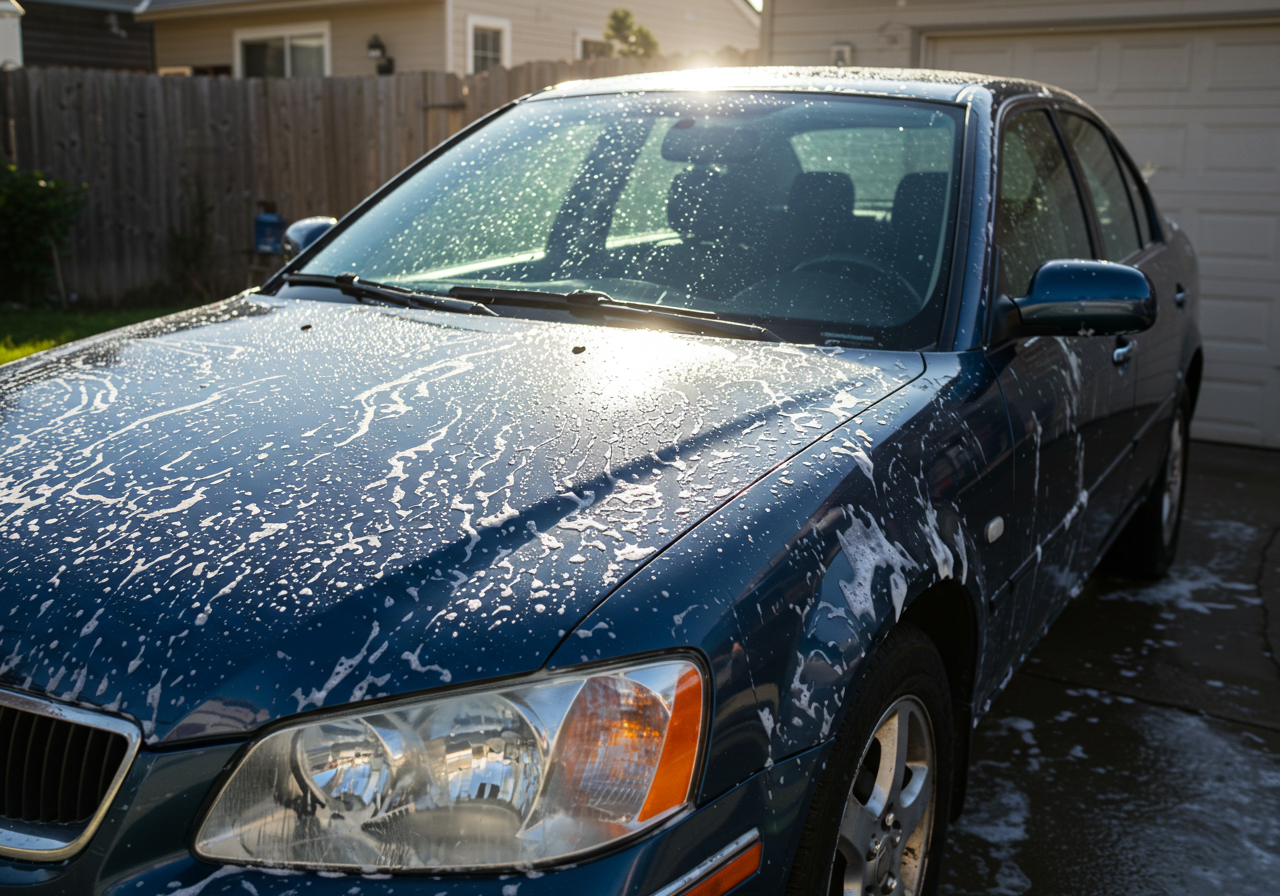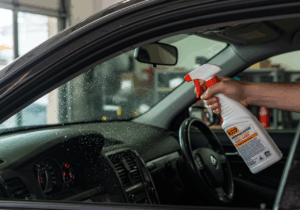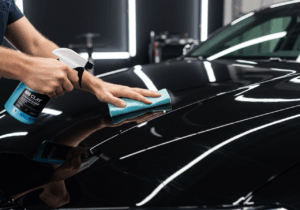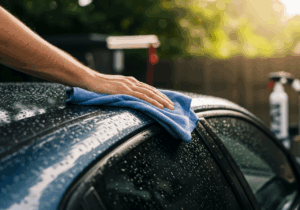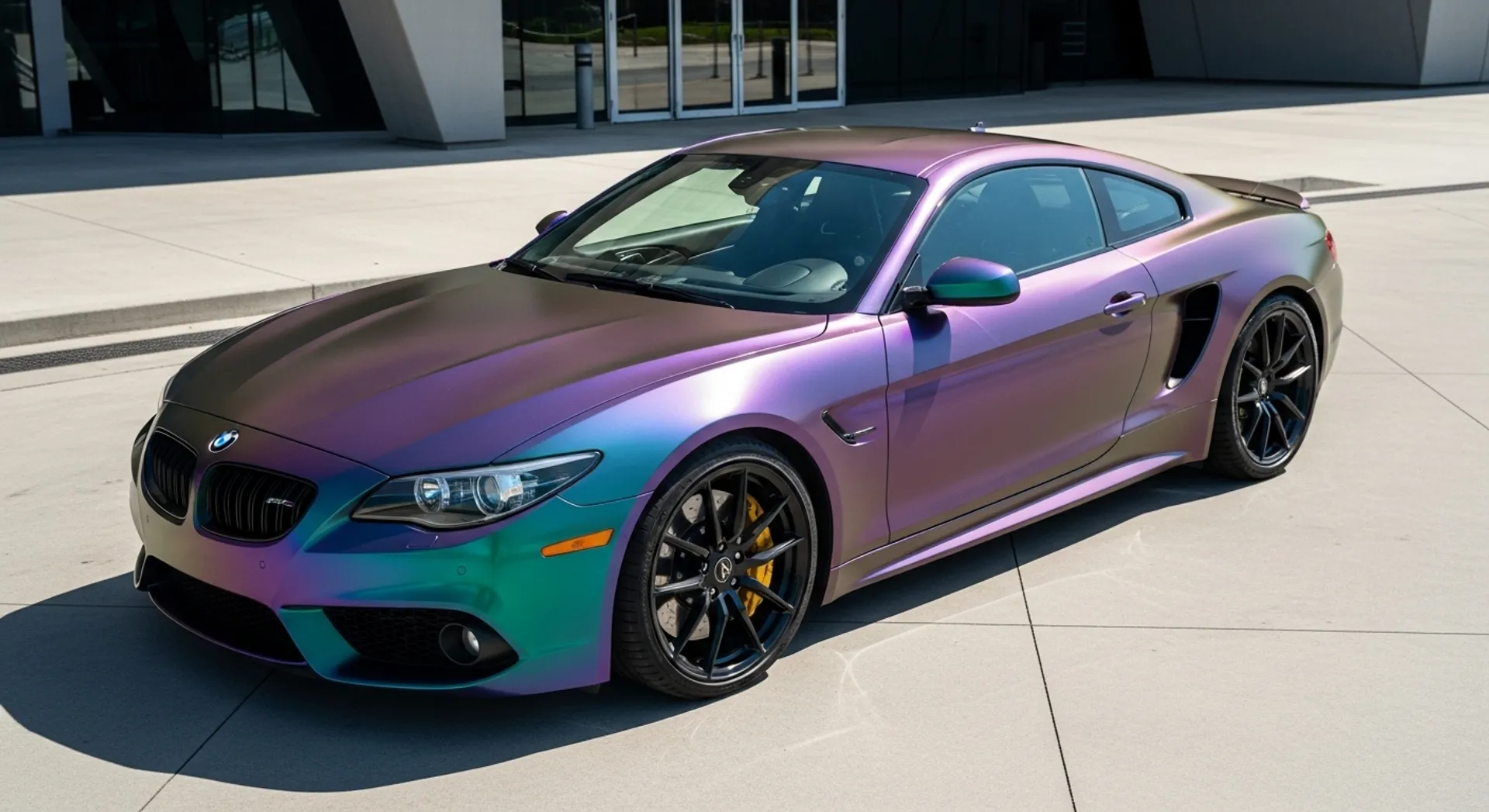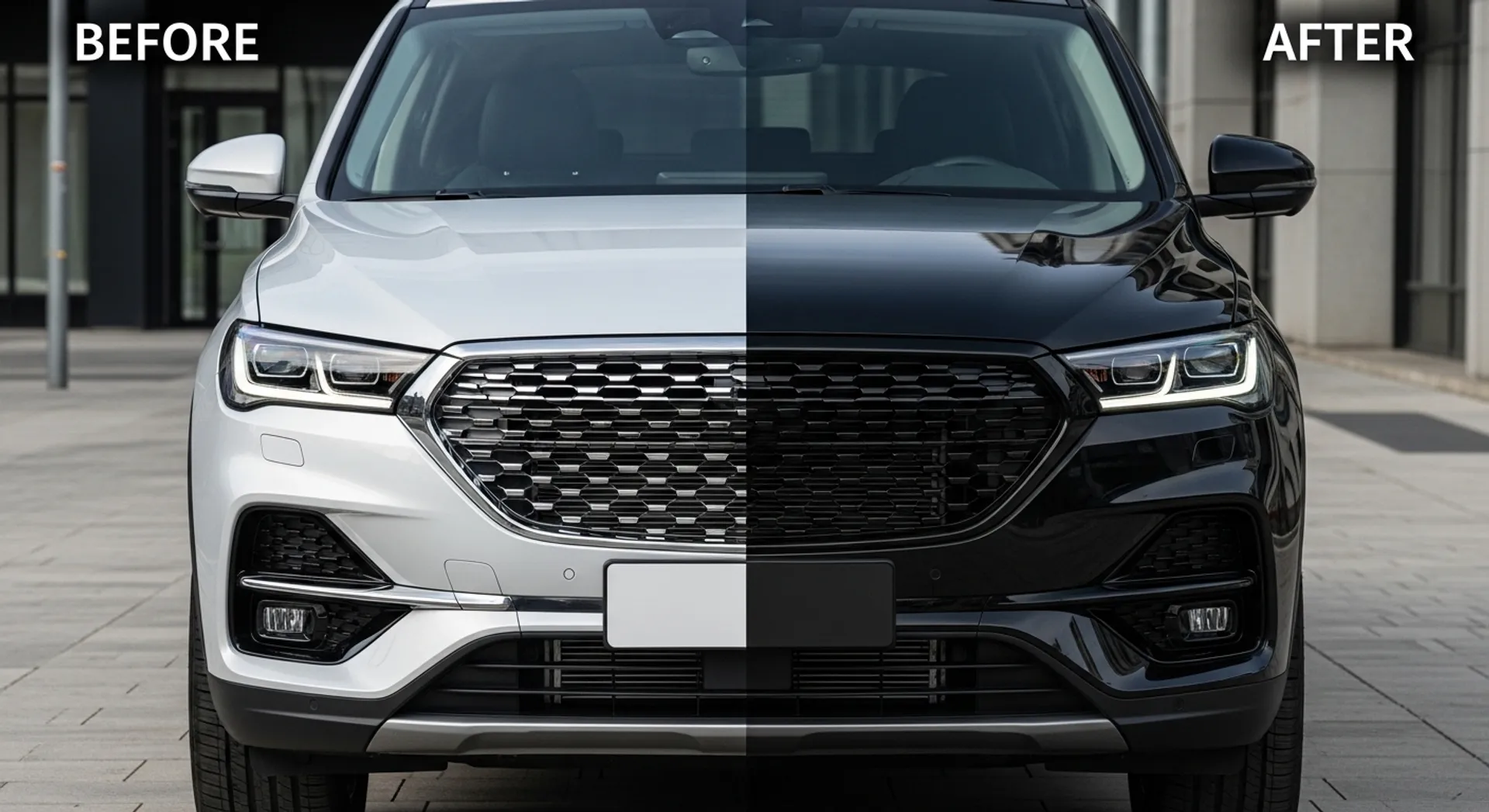Common Mistakes to Avoid When Detailing Your Car
Car detailing is more than just a weekend chore — it’s a critical part of protecting your investment and keeping your vehicle looking its best. Even experienced car owners can fall into common traps that lead to swirl marks, faded paint, water spots, or interior damage. Simple mistakes like using the wrong products or washing in direct sunlight can undo hours of hard work and even lower your car’s resale value.
Awareness is your most valuable tool. By understanding common mistakes to avoid when detailing your car, you can sidestep costly errors and achieve a truly professional finish from your own driveway. Whether you’re hoping to maintain that glossy showroom shine or just want to avoid unnecessary wear and tear, these car care tips help you avoid car detailing mistakes and keep your vehicle looking sharp for years to come.
Key takeaway: Learn how to avoid car detailing errors, so every detail session adds value and protection — not problems — to your ride.
1. Washing Your Car: Avoiding Basic Errors
Car washing mistakes are often the first hurdle for anyone trying to detail their vehicle at home. The most common error is washing your car in direct sunlight. Heat from the sun causes water and soap to dry prematurely on the surface, leading to stubborn water spots and streaks. These deposits can etch into your paintwork, creating unsightly marks that are difficult to remove. Direct sunlight also accelerates the evaporation of cleaning solutions, increasing the risk of swirl marks and reducing the effectiveness of any protective products you apply later.
Following proper car wash tips is crucial for protecting your paint and achieving a spotless finish.
- Choose a shaded location – Early morning or late afternoon works best.
- Rinse wheels first – Wheels collect the most grime and brake dust. Use a separate bucket and dedicated wheel cleaner to prevent cross-contamination.
- Two-bucket method – Fill one bucket with clean, soapy water (car wash soap only) and another with just water for rinsing your wash mitt. This minimizes grit transfer back onto the paint.
- High-quality wash mitt – Opt for microfiber or lambswool mitts instead of sponges or old rags, which can trap dirt and scratch surfaces.
- Top-down approach – Start washing from the roof downwards, finishing with the lower panels since they hold the most dirt.
- Frequent rinsing – Rinse your mitt in the clean water bucket before reloading with soap.
- Final rinse – Use a gentle stream of water to sheet off as much water as possible before drying.
Skipping these steps increases your chances of scratching the paint, leaving residue, and creating more work during detailing.
Avoiding water spots starts by not letting soap or rinse water evaporate on hot surfaces—never underestimate how quickly sunlight can undo all your hard work. Using separate buckets for washing and rinsing is not just a best practice; it’s essential for preventing swirl marks caused by grit recirculating onto clean surfaces.
With these strategies, you set up every other detailing step for success by ensuring you’re working with a truly clean canvas.
2. Choosing the Right Cleaning Products
Selecting the proper cleaning products is central to safe car cleaning and preserving your vehicle’s finish. Using harsh household cleaners can create irreversible damage to paint, plastics, leather, and upholstery.
Products to Avoid
- Dish Soap: Contains degreasers designed for pots and pans, not automotive clear coat. Dish soap strips away wax protection and accelerates paint dulling.
- Glass Cleaner with Ammonia: Ammonia-based cleaners may etch window tint, deteriorate rubber seals, and leave streaks on glass.
- Multipurpose Cleaners: Many household all-purpose sprays contain solvents or bleach that degrade leather, vinyl, or trim—leading to cracking, fading, or discoloration.
- Laundry Detergents: These can leave residues and contain chemicals that are too aggressive for automotive fabrics and carpets.
“Using non-automotive products can save a dollar short-term, but often leads to expensive repairs down the line.”
Safe Car Cleaning Product Recommendations
Sticking with automotive cleaning products makes a noticeable difference in results and safety:
- Car-Specific Shampoos: Brands like Meguiar’s Gold Class or Chemical Guys Mr. Pink are pH-balanced to clean without stripping wax or damaging finishes.
- Dedicated Wheel Cleaners: Opt for acid-free formulas such as Sonax Wheel Cleaner Plus for safe removal of brake dust without harming clear-coated or alloy wheels.
- Interior Cleaners: Look for gentle yet effective options like Griot’s Garage Interior Cleaner or Mothers VLR (Vinyl-Leather-Rubber), which protect while they clean.
- Glass Cleaners: Choose ammonia-free products made for auto glass, such as Invisible Glass.
Choosing products formulated specifically for vehicles ensures safe car cleaning each time you detail. Less risk of harsh cleaners damaging sensitive surfaces means better long-term preservation of your car’s appearance and value.
3. Proper Drying Techniques to Prevent Damage
Leaving your car to air dry after a wash is one of the most common mistakes to avoid when detailing your car. Air drying allows water droplets to evaporate on the surface, which leaves behind mineral deposits and unsightly watermarks. Over time, these spots can etch into the paint, making them stubborn and difficult to remove. To master drying your car without scratches or residue, switching up your technique is essential.
Why Air Drying Falls Short:
- Water naturally contains minerals — especially in hard water areas — which leave deposits as they dry.
- Dust and airborne contaminants can settle onto wet surfaces, embedding themselves into the finish.
- Drips from mirrors, trim, or door handles will streak down clean panels as they evaporate.
The Power of Microfiber Towels:
Microfiber towels are engineered with thousands of soft, split fibers that lift and trap dirt and moisture rather than pushing it around. The benefits include:
- Scratch Prevention: Unlike bath towels or old t-shirts, microfiber’s plush texture glides gently across painted surfaces.
- Superior Absorbency: Microfiber absorbs water quickly, reducing the need for repeated passes and lowering the risk of swirl marks.
- Lint-Free Finish: Quality microfiber towels leave no lint or residue on glass or paint.
Proper Microfiber Drying Technique:
- Start with a clean, high-quality microfiber towel dedicated to drying.
- Gently lay the towel flat on the surface and pat or blot rather than wiping aggressively.
- Work from top to bottom—gravity helps prevent dirty runoff from re-contaminating clean sections.
- Use separate towels for lower body panels where grit is more likely to linger.
Avoiding shortcuts in the drying process ensures you get a streak-free finish while protecting your vehicle’s clear coat from scratches and long-term damage. Using microfiber towels correctly is one of the simplest ways to avoid watermarks and maintain that freshly detailed look.
4. Waxing Wisely for Optimal Shine
Car waxing tips are essential for achieving that perfect shine, but there are common pitfalls to avoid. One major mistake is applying too much wax. Excessive waxing risks include reduced durability and difficulty in achieving a smooth surface. When too much wax is used, it can lead to a build-up that is not only hard to buff out but also attracts more dust and dirt, diminishing the overall appearance of your car.
To avoid these issues, it’s important to determine the appropriate number of wax layers based on your car’s condition and the level of protection you desire:
- New or well-maintained cars: A single layer of high-quality wax is usually sufficient to protect the paint and enhance the shine.
- Older or neglected vehicles: Two layers can be beneficial. The first layer acts as a base, while the second provides additional protection and depth of shine.
When applying wax, follow these guidelines for optimal results:
- Clean Surface: Ensure your car’s surface is clean and free from contaminants before waxing.
- Thin Layers: Apply thin, even layers of wax using a foam applicator pad.
- Circular Motion: Use a circular motion to spread the wax evenly.
- Buffing: After allowing the wax to haze (usually a few minutes), buff it off with a clean microfiber towel in straight-line motions.
Remember, less is more when it comes to waxing. By focusing on quality over quantity, you can achieve a long-lasting, glossy finish without compromising the integrity of your vehicle’s paintwork.
5. Clay Bar Treatment: What You Need to Know
Using a clay bar is essential for removing embedded contaminants from your car’s paint surface. To achieve the best results, it’s crucial to avoid common clay bar mistakes.
Importance of Using Dedicated Clay Lubricants
Always use dedicated clay lubricants during treatment. Plain water or soap solutions do not provide sufficient lubrication and can cause scratches.
Proper lubrication reduces friction between the clay bar and the paint, ensuring a smooth glide that safely lifts contaminants without damaging the surface.
Using the right lubricant helps in achieving effective results, leaving your car’s paint clean and ready for polishing or waxing.
What Clay Bars Can and Cannot Do
Clay bars are excellent tools, but understanding their limitations is vital:
Clay bars effectively remove surface contaminants such as brake dust, industrial fallout, tar, and tree sap. These contaminants are not always visible but can be felt as roughness on the paint.
It’s important to note that clay bars do not remove scratches or oxidation. For these issues, consider using polishing compounds or seeking professional treatment.
Think of clay bar treatment as a preparatory step before polishing and waxing. It ensures that your vehicle’s paint is free from contaminants that could hinder the effectiveness of these subsequent steps.
Tips for Effective Clay Bar Use
Divide your car into small sections and work methodically to ensure thorough coverage.
Regularly knead the clay to expose a clean surface while working.
Apply gentle pressure and let the clay do the work — forcing it can lead to marring.
Understanding these key points about clay bar lubrication and clay bar limitations will help you avoid common mistakes and achieve professional-level detailing results.
Maintaining Regular Detailing Habits
Regular car maintenance is crucial to preserving your vehicle’s appearance and value. Establishing a consistent detailing routine can prevent contamination buildup and paint deterioration over time, ensuring your car stays in top condition.
Key benefits of maintaining regular detailing habits include:
- Preventing Oxidation and Fading: Routine washing and waxing protect the paint from harmful UV rays and environmental pollutants that cause oxidation and fading.
- Minimizing Contamination Buildup: Regularly cleaning the exterior removes contaminants like bird droppings, tree sap, and road grime that can damage the paint if left unchecked.
- Protecting Interior Surfaces: Frequent interior detailing prevents dirt, dust, and spills from becoming ingrained in carpets and upholstery, maintaining a clean and pleasant cabin environment.
Consider incorporating these steps into your detailing routine:
- Weekly Wash: A thorough wash every week keeps dirt and grime at bay.
- Monthly Wax: Applying wax once a month provides an additional layer of protection against the elements.
- Quarterly Clay Bar Treatment: Using a clay bar every three months ensures any embedded contaminants are effectively removed.
- Interior Cleaning: Vacuuming carpets and wiping down surfaces regularly maintains a fresh interior.
By following these practices, you can avoid common mistakes when detailing your car and enjoy the long-term benefits of a well-maintained vehicle.
The Importance of Patience and Attention to Detail in the Car Detailing Process
When it comes to careful car detailing, patience and attention to detail are crucial. Rushing through the detailing process can lead to mistakes that compromise the quality of your work. Taking your time ensures that each step is performed correctly, from washing and drying to waxing and clay bar treatments.
Key aspects of a careful car detailing process:
- Thorough Inspection: Begin by thoroughly inspecting your vehicle for dirt, grime, scratches, and other imperfections. This helps identify areas that need special attention.
- Methodical Approach: Follow a methodical approach, starting with the dirtiest parts of the car, like wheels, and moving on to less soiled surfaces. It’s essential to wash your car the right way to ensure optimal results.
- Proper Techniques: Use correct techniques for each task. For example, use microfiber towels for drying to avoid streaks and watermarks.
- Adequate Time Allocation: Allocate enough time for each step to avoid cutting corners, which could result in subpar results.
Patience ensures that every aspect of your car’s detailing is addressed meticulously, leading to a flawless finish and long-lasting protection. Avoid rushing the detailing process to achieve professional-level results.
Conclusion
By avoiding common mistakes when detailing your car, you can achieve a professional-level finish and maintain your vehicle’s value. It’s crucial to:
- Avoid washing in direct sunlight
- Use automotive-specific cleaning products
- Implement proper drying techniques
- Apply wax correctly
- Use dedicated clay lubricants
Consistent maintenance and attention to detail ensure your car remains in top condition, free from damage and deterioration. By following these guidelines, you’ll not only enhance your car’s appearance but also extend its lifespan.

